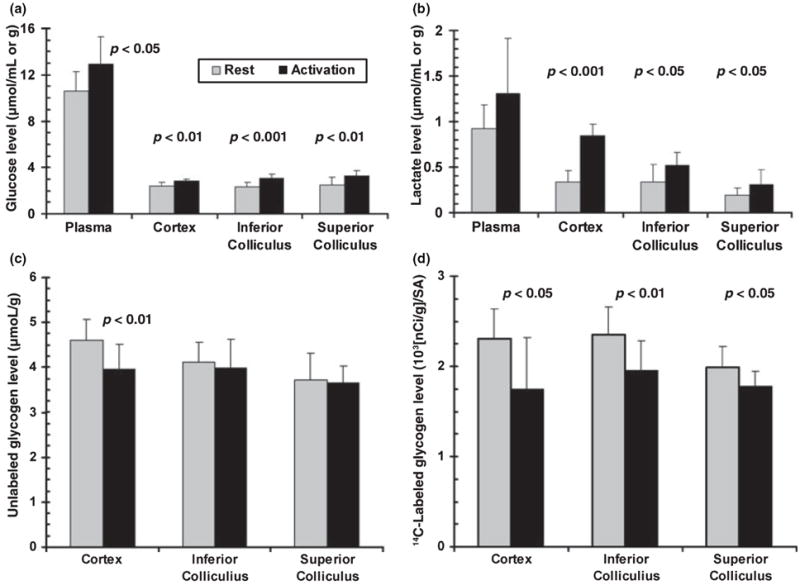Fig. 1.

Sensory stimulation activates glycogenolysis and increases regional glucose and lactate levels in brain. Stimulus-induced changes in plasma (μmol/mL) and brain (μmol/g wet wt.) glucose (a) and lactate (b) level, brain glycogen content (c) and 14C-labeled brain glycogen (d) were determined at 10 min after onset of visual (16 Hz on–off flashing light), acoustic (95 dB broadband tone) and generalized sensory stimulation (gentle brushing of the whiskers and body) of conscious rats. Brain metabolite levels were assayed in tissue extracts. Glycogen turnover was determined as 14C retained in glycogen after pre-labeling with [1-14C]glucose for 30 min prior to stimulation; the [14C]glycogen level in each rat was normalized by dividing by the time-activity integral of arterial plasma glucose for that animal (ISA = integrated specific activity); see Materials and methods. Values are means; vertical bars = 1 SD (n = 9/group). Statistically significant differences between activation and rest were identified with the t-test.
